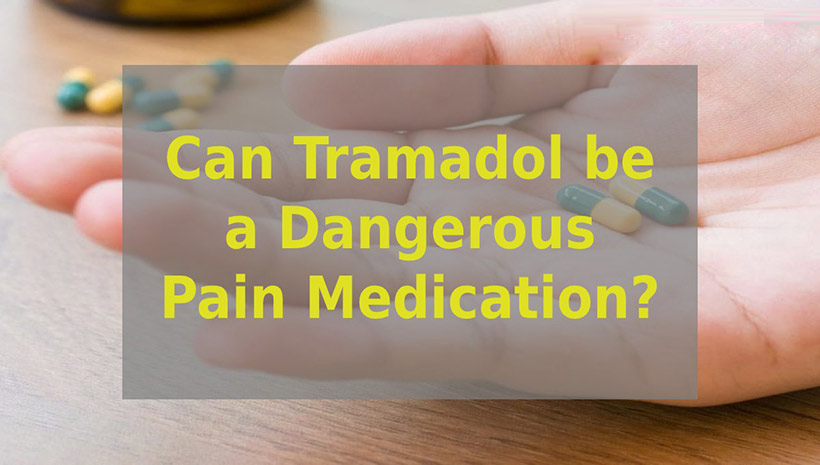
Can Tramadol be a Dangerous Pain Medication?
All the medicines have some degree of risk because they can cause some mild to life-threatening side effects. When recommending a drug, healthcare professionals weigh the expected benefits and risks to determine whether it is worth taking. When you ask a doctor about a particular medication, they tell you about its positive and adverse effects and the warning that comes with the drug. Usually, newly approved medicines are the one that accumulates new warnings. However, sometimes, drugs available for a long time can also garner a new warning. Tramadol might become one such medicine to get a new warning due to increased death risk.
Tramadol Is Different From Other Medicines
Tramadol was not an opiate category drug when the FDA first approved in 1995. Though it works similarly to other opiates like morphine or oxycodone, it was not in the same class. In 2014, the FDA put tramadol under the Controlled Substances Act as a schedule IV controlled substance due to abuse and addiction reports.
The controlled substance status means that though this medicine may have accepted medical use, the potential for addiction and abuse is high. Therefore the authorities strictly regulate its production and distribution. A person can only use a prescription for six months and get a maximum of five refills prescribed from the doctor.
When you compare it with other controlled substances, this drug is a safer option. Substances in schedule I like heroin have a high potential for abuse and addiction but no accepted medical use. In contrast, tramadol is a schedule IV substance, which means it has useful pain-relieving qualities and low potential for addiction and abuse.
Though there is a possibility of addiction and abuse, tramadol remains one of the most common treatments for painful conditions like osteoarthritis. Various professional institutions, including the American Academy of Orthopaedic Surgeons, recommend this medicine as a useful treatment against osteoarthritis.
What Research On Tramadol Suggest?
New research presented in the medical journal JAMA studied the death risk among about 90,000 people one year after their first Tramadol prescription or when they started using other commonly used pain-relievers. The study follows individuals over 50 years old having osteoarthritis.
The study found that people using tramadol were at higher risk of death than those consuming anti-inflammatory medicines. For instance:
- 2.2% of people using tramadol died compared to 1.3% of those using naproxen.
- 3.5% of those using tramadol died compared to 1.8% of people using diclofenac.
- 2.5% of people consuming tramadol died compared to only 1.2% of those consuming etoricoxib.
The researchers also found that people using codeine had a similar death risk to those using tramadol.
The study cannot conclusively prove whether tramadol treatment is responsible for the higher death rate or if the patients who took this medicine were at higher risk beforehand. People with comorbidity can make tramadol use risker than it is.
What Is Problematic About Tramadol Studies?
Researchers have not conducted the study in a controlled environment, which means it is prone to draw faulty conclusions for various reasons. Perhaps, the number of participants not significant enough to find any meaningful difference. Maybe the dosage was too high or too low. Another significant error source in the study can be confounding.
It means an external or unexpected factor that the researchers were not examining caused the observed results. For example, suppose researchers compare two groups for heart attack risk, and the people in the higher risk group have a less healthy diet. They might believe that poor dietary choices lead to inferior heart health. But, what if the people with an unhealthy diet were also smoking more often than healthy eaters. In this case, smoking could be the reason for increased heart attacks.
A researcher must account for the confounder (external factors) for the research to have credibility.
How Does Misleading Information Affect The Study Results?
With this study claiming that tramadol is more lethal than other pain relievers, confounding is a significant concern. For instance, people with kidney disease and arthritis might get a prescription for tramadol installed of naproxen because naproxen can worsen kidney disease. However, kidney problems could increase other health problems’ risk, including a higher death rate.
The researchers might attribute the problem caused by kidney disease to tramadol. Researchers conducting this study acknowledge the possibility of confounding and took measures to limit it, but it is impossible to account for unexpected factors accurately.
Conclusion
If you plan on taking tramadol, consult a doctor about its safety and talk to them about this study. Though the higher death rate among tramadol users is alarming, it is not clear that this medicine is the cause of the increased death risk. We need more studies conducted to confirm or refute whether tramadol is responsible for the increased death rate.
If tramadol is the reason for increased death risk, we need to understand why and what we should do. Further research will also help doctors and patients to understand the potential risk of tramadol better.
